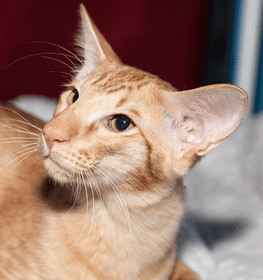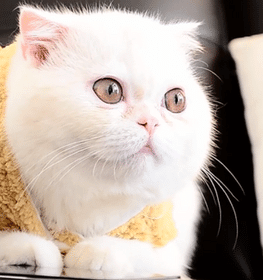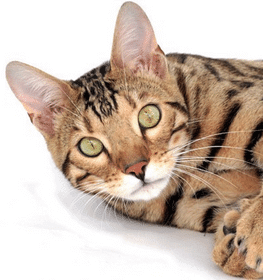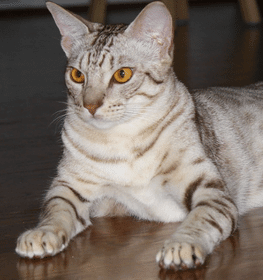Javanese Cat Breed Information and Facts
This page is about the Javanese cat breed information and what it means to own one as a companion animal. If you are considering getting Javanese cat breed, this profile will be helpful in deciding whether or not they are right for you!
| Group | Crossbreed |
|---|---|
| Popularity Rank | 37 |
| Reviews | 0 |
| User Ratings | |
|
Compare the Javanese With Other Cats
Select at least one cat breed to make the comparsion. | |
 | |
| Origin | |
|
Other Names
What other names are there for the Javanese cat? | Colorpoint Longhair, Colourpoint Longhair |
|---|---|
|
Price
What is the cost of a Javanese cat? | $1000 to $2000 If you choose to purchase the Javanese cat, you should know that the mentioned amount of money is an average of the collected data from breeders’ sites and cat finder places. If you have a Javanese cat for sale, please advertise it on a reliable website to make sure the Javanese gets to a happy place. |
| Cost Of Ownership | Moderate |
| Breed Recognition | No data available |
|
Size
How big is a Javanese cat? | Small The small-sized cats usually weigh 5-11 pounds and are 7-10 inches long from the nose down. |
|---|---|
|
Weight
What is the weight of the Javanese cat? | Male: 8 - 12 pounds, Female: 6 - 8 pounds |
| Bite Force | Weak Bite Strength: Less than or around 10 PSI A weak cat bite strength, generally measuring less than or around 10 PSI, is often characteristic of smaller cat breeds like the Javanese or those with less-developed jaw muscles. Cats with weak bite strength pose a lower risk of causing significant harm during a bite. Nevertheless, understanding feline body language and proper socialization are vital for pet owners to prevent biting incidents. Cat enthusiasts researching gentle-biting cat breeds, feline bite force, or specific breeds like the Javanese will find this information valuable. |
| Body Type | Oriental Longhair Similar to the Oriental body type but with a longer coat. Javanese have a slender, elongated body with a narrow chest and long legs, along with a flowing coat. Examples include the Balinese and Javanese. |
| Ear Shape | LargePointedWide-set |
| Eye Color | Blue |
| Hair Color and Pattern | Colorpoint patternPoint colours include seal, blue, chocolate, lilac, red, and cream, as well as lynx (tabby) and tortie patterns.Base coat is cream or fawn with coloured points on ears, face, paws, and tail. |
|
Coat
What kind of coat does the Javanese cat have? | Medium-length |
| Leg Lenght | Long |
| Whisker Length | Medium |
| Musculature | Lean |
| Head Shape | Triangular |
| Toe Count | 5 front4 back |
| Eye Shape And Orientation | Slanted |
| Night Vision | |
| Paw Size | Medium |
| Nose Structure | Long and Narrow |
| Neck Length | Medium |
| Fur Texture | FineShortSilky |
| Bone Density | Medium |
| Flexibility | High |
| Bone Structure | Sturdy |
| Tail Length | Plumed |
| Sleep Patterns | Moderate Sleep |
| Attention Span | Long, vocal and attentive |
|---|---|
| Guarding Instinct | Moderate |
| Protection Instincts | Moderate |
| Climbing Ability | High |
| Jumping Ability | Excellent |
| Swimming Ability | Poor |
| Water Affinity | |
| Rescue Capability | Poor |
| Litter Size | 4-6 Kittens |
|---|---|
| Special Needs | AffectionateVocalRequires attention |
| Breeding | Requires grooming knowledge, small litter size |
| Dietary Preferences | Balanced diet, wet food |
| Solo Time Tolerance | Low |
| Noise Sensitivity | Low |
| Genetic Diversity | Low |
| Sensitivity To Changes | High sensitivity |
| Food Motivation | Moderate |
| Feeding Schedule | Twice a dayMorning and Evening |
| Maintenance Level | Moderate |
| Exercise Needs | High |
|
Life Expectancy
What is the life expectancy of the Javanese cats? | 10-12 years |
|
Energy Level
How energetic is the Javanese cat? | The Javanese cat has a very high energy level. |
|
Hypoallergenic
Are Javanese cats hypoallergenic? | Yes Javanese cats do well with allergy sufferers by causing fewer allergic reactions. However there are no 100% hypoallergenic cats in the world, there are a variety of breeds that are considered to reduce or minimize the possibility of an allergic response.
Coat type isn't necessarily relevant, because most people are allergic to dander (flakes on the cat's skin) or saliva, not actually to cat hair. |
|
Common Health Issues
Are Javanese cats a healthy breed? | Low Very healthy cat breed. The Javanese rarely meets with the veterinarian. |
| Health Problems | Progressive Retinal Atrophy (PRA)Hypertrophic Cardiomyopathy (HCM)Asthma |
| Climate | Temperate |
| Cold Tolerance | High |
| Heat Tolerance | High |
| Breeding Difficulty | Medium |
| Common Vocalizations | Loud and talkative |
|---|---|
| Interaction With Other Pets | Good, social and playful |
| Facial Expression | Vocal and playful |
| Tail Behavior | Vocal and playful tail movements |
| Explorer Instincts | Moderate |
| Attention Needs | High |
| Protectiveness | Moderate |
| Territoriality | Moderate |
| Independence | Moderate |
| Response To Commands | High |
| Adaptability To Indoor Life | High |
| Hunting Drive | High |
| Play Style | CuriousInteractivePlayful |
| Escape Tendencies | High |
| Curiosity | High |
| Hunting Skills | Low ⬇️ |
| Reaction To Strangers | Friendly |
| Stalking Behavior | High |
| Aggression Level | Low |
| Training Difficulty | Easy |
| Agility | High |
| Travel Compatibility | Medium |
| Activity | Highly Active |
| Compatibility With Other Animals | HighFriendlyTolerant |
| Household Noise Tolerance | High |
| Playfulness | Active Adventurer. Javanese are quite playful and enjoy frequent play sessions. They are curious and active, often engaging in interactive games and activities. |
|
Trainability
Are Javanese cats easy to train? How hard is it to train a Javanese? | Difficult to Train: Javanese cat breeds are the least responsive, most stubborn, and hardest to train, often requiring professional guidance and extra effort to achieve even basic results. Examples of difficult-to-train cat breeds include Norwegian Forest, Manx, and Turkish Van. |
|
Lap Cat
Are Javanese cats lap cats? | No This cat sits on its owner's lap less than other breeds. |
|
Temperament
What personality do Javanese cats have? | Active |
|
Adaptability
Are Ragdoll cats adaptable? | Javanese cats adapt well to lifestyle changes and different living environments. They don't mind moving from one place to another with their owner. |
|
Affection Level
Are Javanese cats more affectionate? | High: Javanese cats are genuinely loyal, soft and gentle, loving and affectionate cats toward their handlers. They enjoy quality time with their owners despite the activity and are considered great therapy cats for those in need. |
|
Child Friendly
Are Javanese cats good with kids? | The Javanese cat is a child-friendly breed. This breed is a good choice if you have children. |
|
Dog Friendly
Are Javanese cats good with dogs? | Dog-friendly: Javanese cats generally get on well with dogs. |
|
Intelligence
Are Javanese cats intelligent? Are Javanese cats smart? | Outstanding: Javanese is one of the brightest cat breeds. |
|
Social Needs
Are Javanese cats social? | Lots: this cat breed needs lots of social interaction. |
|
Stranger Friendly
Are Javanese cats friendly to strangers? | Average: this cat breed gets on relatively well with strangers. |
|
Vocalization
Do Javanese cats vocalize? | Frequent This cat breed meows very often. Cats typically start to meow at around six weeks old, when they are old enough to start venturing away from their mother. Meowing is thought to be a way for them to solicit food or attention from their owner. However, cats can also meow for other reasons, such as when they are bored, lonely, or in pain. Indeed, a cat's meow can often be a sign that something is wrong and they require our help. As such, it is important that we take the time to learn how to interpret our feline friend's vocalizations. By doing so, we can provide them with the love and care that they need to thrive. |
| Seasonal Shedding | Moderate |
|---|---|
| Grooming Tools Needed | BrushNail ClipperComb |
| Dental Care | Moderate Cat breeds like the Javanese, classified under moderate dental care needs, display a higher likelihood of encountering dental concerns compared to those with low dental care needs. Factors contributing to their increased risk may involve genetic predispositions or particular breed traits. These cats benefit greatly from a regular dental care routine, encompassing teeth brushing, dental cleanings, and veterinary check-ups, to prevent the onset of common dental problems such as gingivitis, periodontal disease, and tooth decay. |
|
Grooming
How to groom your Javanese cat? | Moderate Maintenance Grooming your Javanese cat is an essential part of caring for their health and well-being. Regular brushing helps remove dirt, and dead hair from the surface to stimulate blood circulation which can lead to a better quality coat with a smoother texture! |
|
Shedding
Do Javanese cats shed a lot? | Minimal This cat breed sheds much less than the average. Brushing your cat daily will help remove loose hair before it gets on furniture or clothing. It is also recommended that you make sure your Javanese cat gets plenty of good quality food and water. A healthy diet will help keep your cat's coat in good condition and reduce shedding. |
Javanese Pros and Cons
Pros
- Energy Level: The Javanese cat has a very high energy level.
- Adaptability: Javanese cats adapt well to lifestyle changes and different living environments.
- Affection Level: High: Javanese cats are genuinely loyal, soft and gentle, loving and affectionate cats toward their handlers.
- Child Friendly: The Javanese cat is a child-friendly breed.
- Dog Friendly: Dog-friendly: Javanese cats generally get on well with dogs.
- Intelligence: Outstanding: Javanese is one of the brightest cat breeds.




